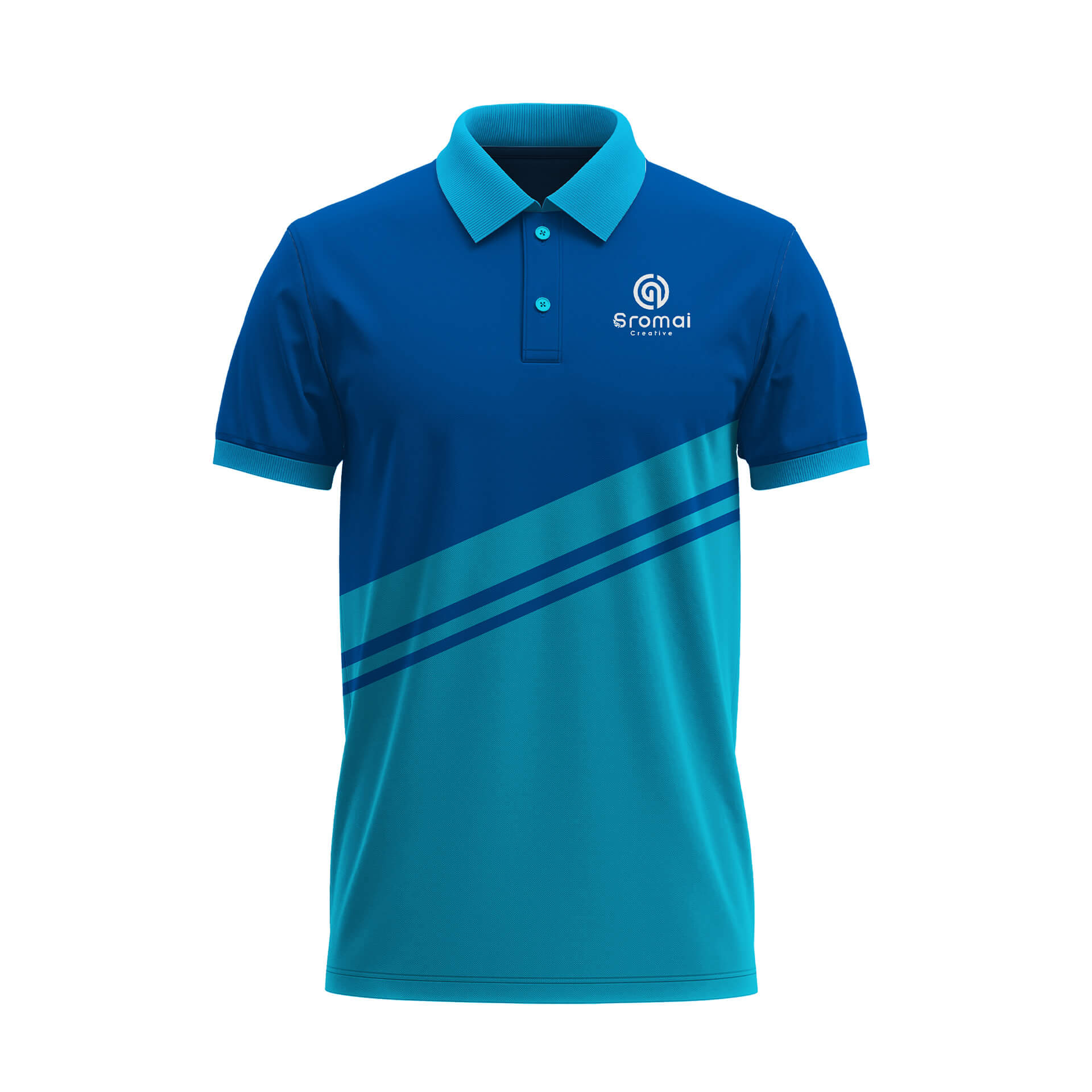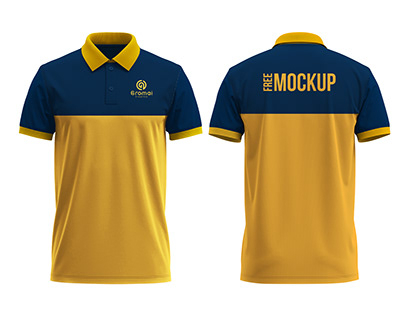Custom polo shirts are more than just clothing; they're a statement. Whether you're outfitting a sports team, branding your business, creating uniforms for your staff, or simply expressing your unique style, a well-designed polo shirt can leave a lasting impression. But the secret to a truly outstanding custom polo lies in its design, and specifically, the quality and relevance of the image you choose to print. For anyone in Australia looking to elevate their custom polo game, understanding where and how to find the right images is paramount.
This article will guide you through the exciting world of "download polo shirt printing Australia images," covering everything from where to source high-quality graphics to understanding the technical requirements and crucial legal considerations. Let's dive in and transform your vision into wearable art!
Why Custom Polo Shirts Are a Game-Changer
Polo shirts strike a perfect balance between casual comfort and smart-casual professionalism. Their versatility makes them a popular choice for a wide array of purposes:
- Corporate Uniforms: Project a unified, professional image for your team.
- Sports Teams & Clubs: Foster team spirit and identity with custom logos and colours.
- Event Merchandise: Create memorable giveaways or staff attire for conferences, festivals, or charity runs.
- Personal Expression: Design unique shirts that reflect your hobbies, humour, or artistic flair.
- Promotional Giveaways: A practical and stylish way to keep your brand in front of customers.
In each of these scenarios, the printed image is the focal point, the element that communicates your message, brand, or personality. Therefore, choosing the right image is not just an aesthetic decision; it's a strategic one.
The Power of a Perfect Image: What Makes a Good Design?
Before you even begin your search, it's helpful to have a clear idea of what makes an image suitable for polo shirt printing. A good design for a polo shirt is typically:
- Clear and Recognisable: It should be easy to understand at a glance, even from a distance.
- Simple: Overly complex designs can lose detail when printed on fabric, especially smaller areas like a chest logo.
- High Contrast: Ensure the colours in your image stand out against the colour of the polo shirt itself.
- Relevant: Does it accurately represent your brand, team, or personal message?
- Scalable: Can it be resized without losing quality? This is crucial for different print sizes.
Keeping these points in mind will help you filter through the vast number of images available online and make informed choices.
Where to Find Your Ideal Polo Shirt Printing Images
The internet is a treasure trove of images, but knowing where to look for print-ready quality and legally compliant graphics is key. Here are some of the best places to start your search:
Free Stock Photo Websites
For budget-conscious projects or simple, generic designs, free stock photo sites can be a good starting point. They offer a vast library of images, often under licenses that permit commercial use (though always double-check the specific license for each image).
- Unsplash: Known for its high-resolution, artistic photography. Great for background textures or general aesthetic elements.
- Pexels: Offers a wide variety of photos and videos, often with a good mix of styles.
- Pixabay: Provides photos, illustrations, vector graphics, and even videos.
Consideration: While free, these images might be widely used, making your design less unique. Also, always verify the license for commercial use and ensure the resolution is high enough for printing.
Premium Stock Photo Platforms
If you're looking for more unique, professional, and diverse options, investing in premium stock photo platforms is often worthwhile. These sites offer extensive libraries and clear licensing options, giving you peace of mind.
- Shutterstock: One of the largest libraries, offering photos, vectors, illustrations, and videos. Excellent for a wide range of styles and themes.
- Adobe Stock: Seamlessly integrated with Adobe Creative Cloud, it offers high-quality assets, including vectors perfect for logos.
- Getty Images/iStock: Renowned for premium, high-quality photography and illustrations, often with more exclusive content.
Benefit: These platforms usually provide vector files (like AI or EPS) which are ideal for printing, as they can be scaled to any size without pixelation. They also have robust licensing systems to protect you from copyright infringement.
Graphic Design Marketplaces & Freelancers
For truly unique or highly specific designs, or if you have a particular vision that stock images can't fulfil, consider hiring a professional designer or browsing design marketplaces.
- Fiverr / Upwork: Platforms where you can hire freelance graphic designers from Australia and around the world to create custom logos, illustrations, or modify existing images.
- 99designs: A contest-based platform where multiple designers submit concepts based on your brief, allowing you to choose the best one.
- Etsy / Creative Market: These sites offer pre-made graphic elements, illustrations, and templates created by independent artists. You can often find unique Australian-themed graphics here.
Advantage: This route guarantees a unique design tailored specifically to your needs, and you can work directly with an artist to refine the concept. Many Australian designers specialise in local themes, which can be a great way to add a unique touch to your polo.
Creating Your Own Unique Design
Feeling creative? With the right tools, you can design your own images from scratch or customise existing ones. This gives you complete control over the final look.
- Canva: A user-friendly online design tool perfect for creating simple logos, text-based designs, or combining elements. It has a vast library of free and paid elements.
- Adobe Illustrator / Photoshop: Professional-grade software for creating vector graphics (Illustrator) or manipulating raster images (Photoshop). These require a steeper learning curve but offer unparalleled creative freedom.
Tip: If you're designing your own, always start with a high-resolution canvas to ensure print quality.
Crucial Technicalities: Image Requirements for Printing
Finding a great image is only half the battle. For professional-looking custom polo shirts, your image needs to meet specific technical requirements for printing. Australian printers will often ask for these specifications.
Resolution is King (DPI/PPI)
For print, resolution is measured in DPI (dots per inch) or PPI (pixels per inch). A low-resolution image will appear pixelated or blurry when printed. As a general rule:
- For high-quality print: Aim for at least 300 DPI at the final print size.
- For larger prints (e.g., full back): Even higher resolution might be beneficial, or a vector file is preferred.
Don't just download a small web image and expect it to print well. Web images are typically 72 DPI, which is fine for screens but inadequate for fabric printing.
Vector vs. Raster: Understanding File Types
This is perhaps the most important distinction for custom apparel printing:
- Vector Files (.ai, .eps, .svg, .pdf - if vector-based): These images are made up of mathematical paths and points, not pixels. This means they can be scaled to any size – from a tiny chest logo to a billboard – without losing any quality or becoming pixelated. Vector files are ideal for logos, text, and sharp graphics.
- Raster Files (.jpg, .png, .gif, .tiff): These images are made up of a grid of pixels. Their quality is dependent on their resolution. If you enlarge a raster image too much, you'll start to see the individual pixels (pixelation). Raster files are best for photographs or complex, gradient-rich artwork.
Recommendation: Always try to use vector files for logos and text on polo shirts. If you're using a photo, ensure it's a high-resolution raster file.
Colour Modes (CMYK)
Digital screens display colours using RGB (Red, Green, Blue). Printers, however, use CMYK (Cyan, Magenta, Yellow, Black). The colour gamut of CMYK is smaller than RGB, meaning some vibrant RGB colours might appear slightly duller when printed. It's always best to convert your image to CMYK before sending it to the printer, or at least be aware of this difference.
Navigating the Legal Landscape: Copyright and Licensing
This is a critical step that many overlook. Using an image without proper permission can lead to legal issues, fines, and damage to your reputation. Always ensure you have the right to use an image for commercial printing.
- Royalty-Free: This often means you pay a one-time fee to use the image multiple times for various projects, without paying royalties for each use. However, "royalty-free" doesn't mean "free to use in any way." Always check the specific license terms.
- Rights-Managed: You pay a fee based on how, where, and for how long you intend to use the image. This is common for more exclusive or high-profile imagery.
- Public Domain: Images whose copyrights have expired or were never copyrighted. These are generally free to use.
- Creative Commons: A range of licenses that allow creators to share their work with specific conditions (e.g., attribution required, non-commercial use only).
Golden Rule: If in doubt, assume an image is copyrighted and seek explicit permission or use a licensed image. Most reputable stock photo sites make licensing very clear.
Bringing it All Together: Tips for Australian Custom Polo Shirt Printing
When preparing your images for printing on polo shirts in Australia, keep these practical tips in mind:
- Think Local: If your target audience is Australian, consider incorporating local themes, landmarks, or even native flora and fauna into your design. This can resonate strongly with customers or team members.
- Consult Your Printer Early: Before finalising your design, talk to your chosen Australian polo shirt printer. They can offer invaluable advice on file formats, resolution, colour matching, and the best printing method (screen printing, embroidery, direct-to-garment) for your specific design and fabric.
- Consider Print Location & Size: Will your image be a small chest logo, a sleeve detail, or a large back print? The chosen location and size will influence the ideal image resolution and detail level.
- Mock-ups are Your Friend: Use online tools or ask your printer for a digital mock-up of your design on a polo shirt. This helps visualise the final product before committing to printing.
Working with Your Australian Printer
Once you have your perfect, print-ready image, the next step is to collaborate effectively with your Australian polo shirt printer. They are experts in translating digital designs onto fabric. Provide them with the highest quality file you have (preferably a vector file). Clearly communicate your vision, the desired print size, and placement. Don't hesitate to ask for a sample or a proof before the full production run, especially for large orders.
Ready to Design Your Dream Polo?
Creating custom polo shirts in Australia is an exciting venture, whether for business, sport, or personal expression. The key to a successful outcome lies in the quality and suitability of your chosen image. By understanding where to source high-resolution, legally compliant graphics, and grasping the technical requirements for printing, you're well on your way to designing polos that truly stand out.
So, take the time to explore the vast resources available, choose your images wisely, and collaborate closely with your Australian printer. The perfect custom polo shirt is just a few clicks and a good design away!
Summary: This article provided a comprehensive guide to finding and preparing images for custom polo shirt printing in Australia. It covered the importance of quality images, where to source them (free and premium stock sites, freelancers, self-design), crucial technical requirements like resolution and file types (vector vs. raster), and the legal aspects of copyright and licensing. Practical tips for Australian contexts and working with local printers were also included to help readers create professional and impactful custom polo shirts.




